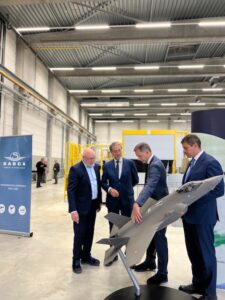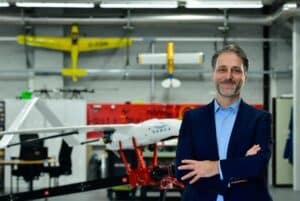
At the end of February 2024, Thibauld Jongen, CEO of SABCA, was stepping down after eight years at the helm of this major Belgian aerospace company. This is an opportunity for us to take stock of this century-old company (founded in 1923), its future challenges, its ambitions and the programmes that drive it.
Thibauld Jongen studied civil engineering at the University of Leuven before moving on to the Delft University of Technology and the Von Karman Institute, and then heading off to the Ecole Polytechnique Fédérale de Lausanne, where he obtained a doctorate in fluid dynamics. He went on to work as a researcher at Unilever. He then moved to Safran Aero Booster for a return to aeronautics before taking over as head of SABCA in 2016.
Thibauld Jongen: “Ever since I was a child, I’ve been fascinated by aeronautics and everything that flies. I used to make lots of model planes. I’m still amazed: I used to make a model of an F-16 and now I can see the whole plane being made in real life, as well as parts of rockets and commercial aircraft.
When I look back at my career, I’ve always been motivated by doing things that interested me, but I haven’t really had a career plan. On the other hand, at each stage I’ve always asked myself “what interests me most for the next stage”? And every time, it was a new challenge. It was an ambition, an excitement to move on to a new project. I’m drawn to projects that involve developing things and, above all, putting a vision in place and understanding the environment. That’s where the interesting part comes in, but also the panic part, because I’m here without understanding everything yet. From there I have to start structuring the thinking, integrating the major issues and then start communicating and motivating people. I love convincing people, for a good cause of course. I also love transforming technology into a need, so that it serves people. I want to try and transform technological skills, and SABCA is full of them, into a product or service proposal that a customer needs. It’s a bit like creating the market by trying to convince the customer that it’s a need”.
Let’s look back over the past eight years at the helm of this major Belgian aerospace company.
TJ: “SABCA has been quite an adventure for me. When I arrived, Dassault (at the time a 53% majority shareholder) asked me to turn the company around or close it down. Basically, SABCA had missed the turning point and was still in the 80s and making a loss. Now, that wasn’t Dassault’s reason for pulling out of SABCA. On the other hand, a company like Dassault has no reason to have industrial activities in Northern Europe, in Belgium. Their industrial assets are either in France or in the countries that buy their aircraft. Coming back to SABCA, Dassault’s involvement dates back to the contract for the purchase of Mirage Vs by Belgium. SABCA was not really part of Dassault’s industrial strategy in the broadest sense. We became strategic again when the contract to replace the F-16s was signed. As Belgium did not choose the Rafale, Dassault preferred to sell this asset to someone who could develop it. I’m proud that it has once again become a 100% Belgian asset. We continue to work on Dassault programmes, and there are no hard feelings towards each other.
The challenge will have been to rebuild the company from the bottom up, capitalising on key strengths such as engineering, innovation and the passion of the staff. We had to rethink the strategy, what are we doing, where are we going, what is SABCA’s role in the aerospace ecosystem. If I look at the order book in 2016, it was an abyss and now it’s full for 10 years. I took stock of our strengths and we asked ourselves how we could differentiate ourselves”.
Today, SABCA has 1,000 employees spread over four sites: Brussels (the head office with 680 employees), Lummen (90 employees), Louvain-La-Neuve and Casablanca in Morocco. It is also one of the pillars of the Orizio group with SABENA Engineering.
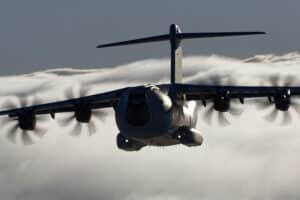
TJ: “Our core businesses are aerostructures, in aluminium and composite, and actuators. In aerostructures, one of our flagship products is the flap support for the Airbus A400M or the Airbus A350. These are parts that are designed and manufactured here. For most of our programmes, we are the sole source of supply for our customers. This therefore means that if we had no deliveries, there would be no more planes coming off the assembly lines. This is really one of our great strengths, the design of highly stressed and critical structural elements for the wings and the fuselage.
For actuators, it is electro-mechanical technology. We manufacture, for example, the most powerful rocket actuator in the world (lower stage of the Ariane 5 launcher). We learned about actuator technology from the F-16 programme. We had, in fact, inherited the final assembly of the F-16s in Gosselies but also the manufacturing, testing and maintenance of the F-16 actuators. SABCA has therefore logically positioned itself as a specialist and sole manufacturer of actuators for all European rockets. So, from a military programme, we positioned ourselves in space and from there, we moved back into the civil domain. A year and a half ago, we were, in fact, selected by Airbus to put electro-mechanical actuators on their planes. It will be on the A350. This is strategic for us, because we will be in pole position when Airbus launches a new plane that will have more electrical systems.
So we know how to make the bones of the aircraft with rigid structures, but also the skin with composites, the muscles with actuators, the nerves with wiring, and we know how to translate movement intentions into muscle movement sequences. We are the only company capable of designing aerostructures and actuators from scratch. We have a lot of competition in these two areas, but we are the only ones who can do both. So we can provide our customers with a complete arm, and that’s what attracts their attention.
Aerostructure is an area with a high fixed cost structure, because it requires large machines and therefore a high volume of work to be profitable. We are still small in this world. Our competitors have sales of between €500 million and €1 billion, whereas we only have €100 million in aerostructure. We need to grow while remaining dominant in the space sector, and expand into high-volume areas such as civil applications. This vision, defined seven years ago, is bearing fruit and has led to what we had imagined”.
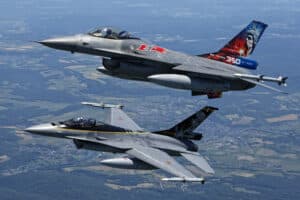
SABCA, like SABENA, celebrated its centenary in 2023. A rich history that the oldest will remember with assembly programmes such as the F-84, Hawker Hunter, F-104, Mirage V, F-16 , etc. to name a few. We will also note numerous maintenance programmes such as for the L-20 Beaver, H-34, T-33, Mirage F1, A-10, Alpha Jet, to name just a few. The manufacturing of parts for programmes such as the Airbus A380, A320, A330, Fokker 27, Dornier 728 among others. From the start of a European space programme, SABCA has been there.
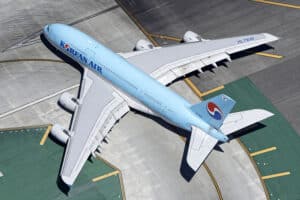
TJ: “It was a great pride to be at the head of the company during this milestone anniversary. It should be remembered here that SABENA and SABCA were born from the same Belgian company created in 1918 (S.N.E.TA. – Syndicat National d’Etude des Transports Aéronautiques) with a complementary vision and now since 2023 these two companies have been reunited again and under a Belgian flag.
With the Orizio group, in order to optimise things, SABCA will concentrate on its core business of manufacturer and designer of new parts and SABENA Engineering will take care of aircraft maintenance and repair sooner. So SABCA Gosselies became SABENA Engineering and so did its staff. It is also clearer in relation to customers. If I take the example of the F-35, SABCA (Part 21) will manufacture parts of the aircraft. If tomorrow there was maintenance to be done (Part 145) then it would be SABENA Engineering which would take on this work. Anything that is an “operator” like drones is also SABCA. This also shows that Orizio manages the entire life cycle of an aeronautical product.
SABCA on the Haren site is the second largest industrial space in the Brussels region after Audi in Forest. Here we bring together management, engineering, manufacturing and surface treatment of metal parts and servo controls (actuators)”.
How is the relationship with Airbus?
TJ: “First of all, the recovery of SABCA and its vision allowed us to capture markets and become a strategic supplier. Airbus has a suppliers council which includes the 12 most strategic suppliers and SABCA, small as we are, is part of this council. Airbus sees great potential in the company thanks to our ideas and our skills and therefore we have never been so close to them. Our strength is really this “intimacy” with the client: we understand what they want, we are open to discussion, we are much less involved in conflict or showdowns. This is the partnership model. Then Airbus also came back somewhat from its “large” supplier model with a significant turnover. They are turning more towards niches to have other alternatives. For actuators, Airbus is clearly counting on SABCA. Post-COVID also demonstrated that several other sources of supply were needed.
Airbus is very interested in complex assemblies with already integrated equipment, multi-material assemblies (composite and aluminium for example). This is their long-term vision. In addition, Airbus wants to increase its production rate to more than 70 A320s per month. They are not going to do this with a single source and that is an opportunity for us. SABCA is too small to make 70 per month, but we could work on parts of parts and make 20/month”.
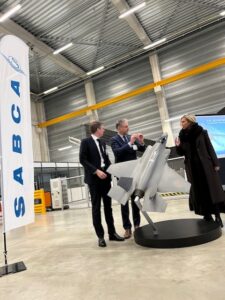
What was the impact of COVID?
TJ: “It’s still felt today. We work a lot on long-haul aircraft and the volume on this type of aircraft is still at 50% compared to the pre-COVID production level. We were at 10 A350s/month, we are now at 4 – 5/month. Within two years, thanks among other things to the A350-1000, we will go back to 10/month. On the A330 programme, we were at 5/month, we fell to 2/month and we will go back up to 4/month in a year. In fact, it’s not us who are slowing down, the order books are full, but not all supply chains can ramp up so quickly. We are still in the trough and we are still very affected by Covid. Additionally, all of our new programmes are in the development phase and we need to invest. This is the case for the F-35, the Pilatus PC-12 to increase the rate (40/year). We have programmes which have been completed (A380), programmes which continue, but at half their pace and programmes for which we must invest heavily. To this we add the four years of delay for the Ariane 6 rocket. So we have fully incurred the costs, but we do not yet have any income. We are not yet selling an Ariane 6 and what’s more, this programme is more expensive than expected. We are at the bottom of the wave and financially, it is tense. For the moment our income does not cover our costs, and has not for several years. It’s like a hibernation phase, we know that the sun will return, but we have to hold on. We are already paying for materials that will be used in a year and a half. When it starts again we will have to be ready and we have a bright future.
As for turnover, the defence and MRO (Maintenance, Repair & Overhaul) side is doing very well. The SABCA production part is more complicated. We’re going to be at a minimum. For the SABCA part we will be above 100 million, but not much more whereas we were at 170 million before Covid. Fortunately with the Orizio group, this allows us to have a certain solidarity and to have the effect of communicating vessels.”
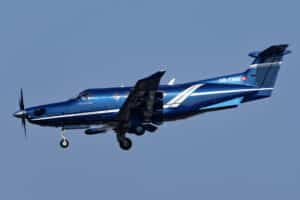
Are the current conflicts having an impact?
TJ: “There are some less negative things. F-16 maintenance is a strategic platform for Ukraine, and the skills of Orizio (SABENA Engineering) are recognised. What’s more, Europe is waking up to the issue of defence, with a willingness to invest in the industry and in autonomy. On the more negative side, a war is causing concern in the markets, with big increases in the price of raw materials. When the first Belgian F-35A left the factory, SABCA and SAFRAN Aero Booster signed two major contracts for the programme. By January 2024, more than 1,000 of these aircraft had already rolled off the assembly line”.
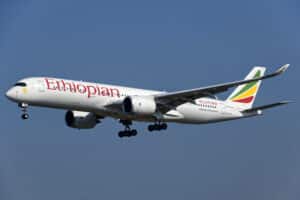
About this contract with Lockheed Martin:
TJ: “It’s more than we hoped for at the beginning. It got off to a bad start, but I think mentalities have changed. In Belgium for Defence, discussing with industrialists is no longer forbidden territory. The current defence minister has helped in this process with much better alignment with them than a few years ago. The military realise that industry is necessary for Belgium, that it creates value and vice versa. Collaboration is also better at the level of Belgian manufacturers (ASCO, SONACA, SABCA, etc.) with a better strike force and also with the help of the federal government. All this allowed us to knock on Lockheed Martin’s door.
With this programme, we will learn things. We will certainly manufacture to plan, but with new technology. This will involve working on high-end composite (high temperature resin) with high precision and high quality standards. For example, we have invested in machines allowing holes to be drilled very precisely. For the inner “skin” of the wing, we will invest in another machine for working on complex composite with much smaller strips of fibres. This will allow us to make much more complex shapes. It is important to have volume with this military programme, but also to acquire skills that we can integrate into the civilian field later.
If there are openings with other manufacturers like Boeing or Embraer? Yes, this is part of our strategy. We want volume. We are in discussions with them. We already work for Gulfstream or for Dassault (Falcon 6X) and for Pilatus (in the Casablanca factory).”
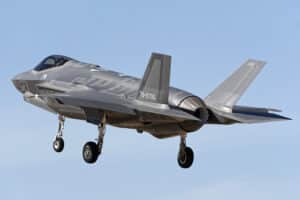
How are things going with the three regions of the country?
TJ: “Each region has its own way of operating. We are playing the federal card with Orizio. This federal involvement is very important to me because it allows us to overcome these losses of time and interregional impact. We are located in the three regions of the country. After handing over the Gosselies plant, we no longer had any facilities in Wallonia. Gosselies was never a subsidiary, but a technical unit, which means that we were not really “Walloons” since the headquarters was always in Brussels. Now, with SABCA Technologies in Louvain La Neuve (LLN), we have a foothold in Wallonia. We wanted to settle at LLN for the university environment with laboratories, professors and synergies, especially in the field of electro-mechanics. It is mainly for the design/development of actuators at the electro-mechanical level and for drones with the development of equipment and systems.
For aeronautics, the Belgian associative landscape is complicated. I take the example of BSDI in AGORIA, it is defence and security, but not space. Afterwards, I have Skywin with space, but it’s only Walloon. No matter the angle, it’s not consistent. I campaign for “GIBAS”: Belgian Aeronautics and Space Industrial Group. It would be simple and clear, with an interlocutor at the federal level who would be the point of transmission at the level of European and global opportunities, and then redistribute.
It is also important to have European autonomy and sovereignty. As an administrator of Ariane Espace which markets European launchers, I can say that the specific technology is fabulous, but Europe has perhaps been too arrogant. Ariane Espace is in difficulty today with the premature shutdown of Ariane 5 and the delay of Ariane 6 in addition to the competition. Commercially, it’s very different, we don’t fight at the same level. The American market has 10 to 100 times more launchers. Risk taking is different. If I take Space But Space X will be paid 120 million by the American government for the same launcher. The idea behind this is to make Europe thirsty and impoverished. That it no longer has defence and space industries. This is why we must have a sovereign vision in Europe. We must have autonomous and sovereign access to space with our own launchers. So yes it is expensive, but you have to choose if you want to remain independent. It’s the same for the F-35 programme, we went from a few units to more than almost 800 sold in Europe.
The number of military satellite launches is gigantic and it is therefore already a captive market by definition. In Europe, there are no captive markets.
For drones, there are no markets with clear specifications. The number of demonstrations we have given to the Belgian army, they want a little of this and a little of that, without a clear project. Belgium will be interested in 10 machines, Holland in 5. There is no consolidation and we are not going to do 2000 for Europe. So everyone has little crumbs.”

What programmes will SABCA be involved in in 10 years’ time?
TJ: “What interests us in a programme is taking part in it and learning new things. Belgium is a small country with no domestic markets. We’re just “co-pilots”, and to be invited to the party, it’s not the industrialist who has the entry ticket, it’s the government. It’s the government that signs an agreement, as it did for the FCAS (Future Combat Air System) programme, and then the manufacturer will be invited to take part in the programme if it’s good enough. We have to prove that we are up to scratch. What’s really important is to take part in programmes as long as we learn things that could lead to developments that could be redeployed in other markets.
With the group of Belgian manufacturers, we’re going to position ourselves together on one programme or another, such as moving wing surfaces, including actuators, composites and so on. The idea is really to develop a ‘Belgian’ product so that the market knows, ‘Oh, I need this, and in Belgium they’re the best “.
SABCA has set up a department dedicated to drones for industrial customers, offering a comprehensive range of services from design, integration and manufacturing to certification, maintenance and support. In addition, SABCA has developed a complete ecosystem for parcel deliveries, transporting high-value goods in areas considered critical to safety. This system has been demonstrated from 2019.
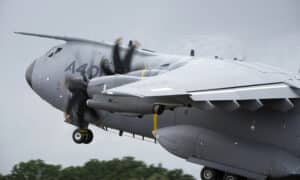
Where will drones be in 10 years?
TJ: “In fact before arriving at SABCA, I worked at Safran Aéro Booster and I had already had the idea of developing a drone testing centre with a friend, where Drone Port is located today, in Sint-Truiden. I then gave up with my time at SABCA and about a year later, I said to myself “am I stupid or what”? The best place to do it is here. We have everything you need for a drone department. We realise that many come from the world of aeromodelling. This is also a problem for the certification of all these complicated flights, the equipment coming from a hobby world, they are not certified. We have to retest everything, because the technical sheets are not complete.
This world of drones, I see it like cars 120 years ago with manufacturers working in their garage. From there came the first accidents following the integration of cars into society. We started to regulate everything with driving licences, insurance, technical inspection, etc. For drones, this still needs to be structured, undoubtedly with the arrival, for example, of a transponder to be recognised in air traffic. For this reason, Belgium is an interesting place with a complex airspace.
For the moment, we are the only ones in Belgium to have a LUC (Light UAS Certificate). This means that we can self-authorise our missions within a given framework. We are not going to turn to the design of aircraft with people inside. Our job is to provide systems for drones that could do this, but we are not going to develop this type of machine.
Our drones are vehicles without pilots and without passengers for applications such as surveillance. For further development, it will be for civilian missions, clearly for industrialists with complicated missions or the transport of small loads. We are looking to develop a sufficiently general fixed-wing drone. It would allow you to open a lot of applications. A good all-round system. For linear surveillance, on construction sites, at sea, etc.
For the military, this is a step that we did not take 3-4 years ago and that we probably should have taken. In fact, in terms of new technologies, that’s where it’s happening. For large drones, like the MQ-9B, we are just a supplier. We’re working on the radome “.
Thibauld Jongen will remain a director of SABCA. He will be turning his attention to a new project involving the development of robots with industrial common sense.
TY: “I think we’re at a key moment in evolution, especially with robots. I’m 53 and I still want to do things. The whole world of neuroscience and AI has always fascinated me. We have enough skills in Europe to develop robots with common sense. What is common sense? It’s the ability to relate cause and effect, a kind of causal reasoning. This reasoning will help to plan the work. Secondly, it’s the physical knowledge (space and time) to plan, move and anticipate. Thirdly, it’s empathy: understanding what the other person wants and their intentions. Finally, it’s also about having meaning and values, a kind of ethics. Common sense is a kind of universal language “.
